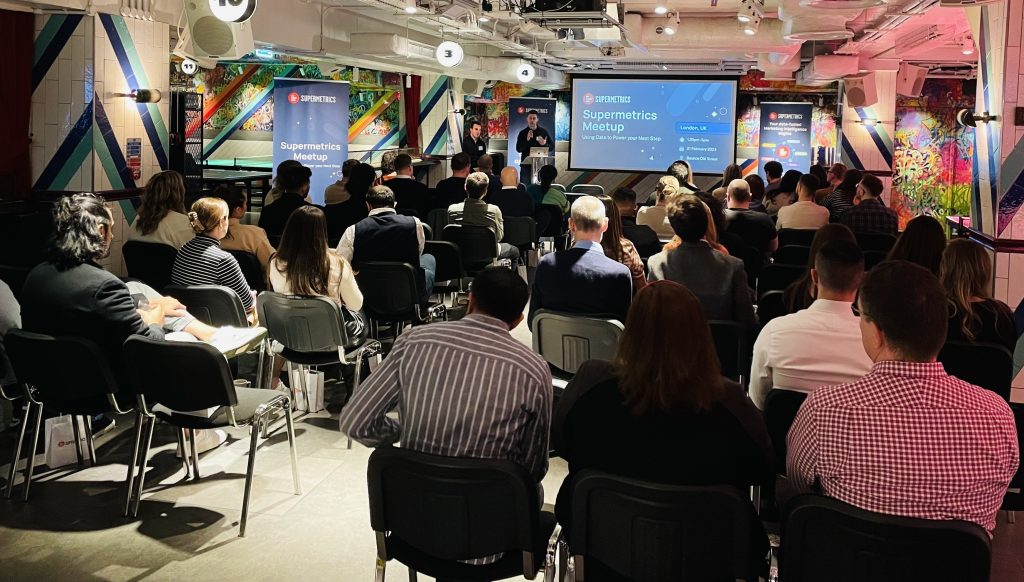SuperSummit London was the second live event in the SuperSummit series. Kicking off after the great event we had in Sydney, we knew the expectations would be high. Fortunately, we had a venue offering something nobody could resist: table tennis!
Hosted at Bounce Old Street, the venue was exactly where you’d want to spend an afternoon in grey, soggy London. Luckily for us, we still had a great turnout from the dozens of Supermetrics customers who braved the storm to come out and see what we had to say. The relaxed nature of the venue really lent itself to casual conversation, the kind of thing that’s so important when building relationships with customers.

If you’ve ever wondered what table tennis halls do during the day when most people are at work, the short answer is: not much. That made it the perfect backdrop for our presentations in the afternoon accompanied by some light networking beforehand. In contrast to the Sydney event, our audience, albeit smaller, stuck around afterward for hours as Bounce transitioned from a cordial gathering to a lively arena filled with conversation, laughter and, of course table tennis.
During this event, I had more time than usual to meet with customers ahead of time. I was happy to hear that the content I was about to present would already resonate with the audience. We’d been working on a new narrative centered around “on-demand” and “centralized” data access, and the way that these two methods compliment each other in well-functioning organizations. This concept had been crystalizing over the past few months, but I really felt like we had nailed it after hearing the customer feedback before I gave my presentation.
The gist is this: marketing teams need access to tools that empower them to make decisions quickly and independently. This is because marketing moves faster than the data infrastructure that supports it. There is a separate and correspondingly equal need for marketing teams to be supported by data teams due to the demands associated with managing large data volumes. The question is not “which one should I use?”, but rather, “how can I use both most effectively?”.
If you’re interested in diving deeper into the above, I recommend checking out the blog post I’ve written on Data-driven marketing decisions in addition to the Podcast I recorded earlier this year with Edward Ford.

